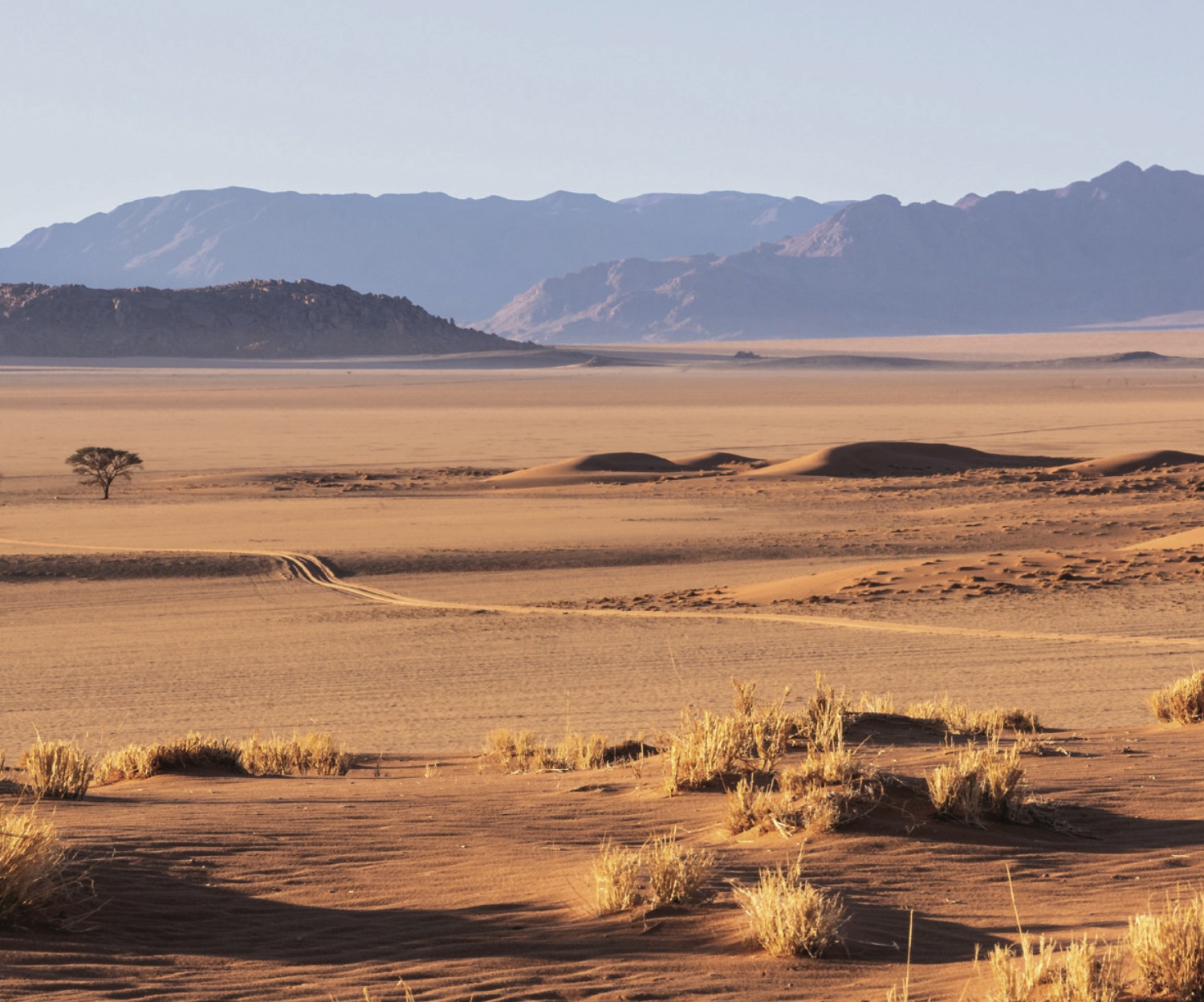Namibia, located on the southwestern coast of Africa, is a country of incredible contrasts, stunning landscapes, and a rich history that resonates deeply with its people and visitors alike. Covering an expansive area of approximately 825,615 square kilometers, Namibia holds the title of the 34th largest country in the world by landmass. Despite its vast size, the country is one of the least densely populated places on Earth, making its wilderness an untouched paradise that draws adventurers, scientists, and nature enthusiasts from across the globe.
Namibia’s vast landscape is home to some of the most unique ecosystems and geological wonders on Earth. From the towering dunes of the Namib Desert to the rugged beauty of the Fish River Canyon, Namibia’s terrain is a treasure trove of secrets waiting to be uncovered. In this article, we delve into the hidden gems and fascinating features that make Namibia one of the most intriguing destinations in the world.
The Namib Desert: A Timeless Wonder
The Namib Desert, which stretches along Namibia’s Atlantic coastline, is one of the oldest deserts in the world, with an estimated age of over 55 million years. Its name, derived from the Nama word meaning “vast place,” perfectly encapsulates the endless dunes and barren landscapes that define this region.
One of the most iconic features of the Namib Desert is the Sossusvlei, a salt and clay pan surrounded by some of the highest sand dunes in the world, including the famous Dune 45. These dunes, with their vibrant red-orange hues, are shaped by wind patterns and offer breathtaking views at sunrise and sunset. The desert is also home to the eerie and photogenic Deadvlei, where ancient, desiccated camel thorn trees stand in stark contrast to the white clay pan and vibrant dunes.
Despite its harsh environment, the Namib Desert teems with life adapted to its arid conditions. The fog-basking beetle, endemic to the desert, collects water by using its body to capture moisture from morning fogs, while the Namib gecko thrives on the desert’s sparse vegetation and insects.
The Skeleton Coast: A Graveyard of Ships and Secrets
Stretching along the northern part of Namibia’s coastline, the Skeleton Coast is one of the most desolate and hauntingly beautiful regions in the country. Known as the “Gates of Hell” by Portuguese sailors, this stretch of coastline is infamous for its treacherous currents, dense fog, and shifting sands, which have caused countless shipwrecks over the centuries. Today, rusting shipwrecks remain scattered along the shore, serving as ghostly reminders of the perils faced by seafarers.
The Skeleton Coast is also a haven for wildlife. Despite the harsh environment, colonies of Cape fur seals thrive here, supported by the nutrient-rich waters of the Benguela Current. Visitors might also spot desert-adapted elephants, lions, and hyenas, which roam the dry riverbeds and dunes in search of food and water.
The Etosha Pan: A Salt Flat That Comes Alive
At the heart of northern Namibia lies the Etosha Pan, a vast salt flat that is part of the Etosha National Park, one of Africa’s premier wildlife destinations. The pan, visible from space, is a remnant of an ancient lake that dried up thousands of years ago, leaving behind a shimmering, white expanse.
During the dry season, the pan appears lifeless, but when the rains arrive, it transforms into a temporary wetland, attracting thousands of flamingos and other migratory birds. Surrounding the pan is a rich ecosystem of savannas and woodlands, home to iconic African wildlife such as lions, elephants, rhinos, giraffes, and zebras. The abundance of wildlife and the unique scenery make Etosha National Park a must-visit destination for nature lovers and photographers.
The Fish River Canyon: Africa’s Largest Canyon
The Fish River Canyon, located in southern Namibia, is the second-largest canyon in the world, surpassed only by the Grand Canyon in the United States. Carved over millions of years by the Fish River, this geological marvel stretches for about 160 kilometers, with a depth of up to 550 meters in some places.
Hiking the Fish River Canyon is a popular activity for adventurers, offering unparalleled views of its rugged cliffs, winding riverbeds, and dramatic rock formations. The canyon’s stark beauty and geological significance make it one of Namibia’s most iconic landmarks.
The Kavango and Zambezi Regions: Green Oases in the North
In contrast to Namibia’s arid landscapes, the northern regions of Kavango and Zambezi are lush and fertile, thanks to perennial rivers such as the Okavango, Zambezi, and Kwando. These regions are part of the Zambezi Basin, a vital water source for the local communities and wildlife.
The Zambezi Region, formerly known as the Caprivi Strip, is a haven for birdwatchers and wildlife enthusiasts. The region boasts diverse ecosystems, ranging from wetlands and floodplains to dense forests, and is home to elephants, hippos, crocodiles, and a variety of antelope species. The area is also a key component of the Kavango-Zambezi Transfrontier Conservation Area (KAZA), one of the largest conservation initiatives in the world.
Unique Geological Features: Twyfelfontein and the Spitzkoppe
Namibia’s vast landscape is dotted with unique geological formations that tell the story of the Earth’s ancient past. Twyfelfontein, a UNESCO World Heritage Site, is renowned for its collection of over 2,500 rock engravings created by the San people thousands of years ago. These petroglyphs provide a glimpse into the spiritual and cultural lives of Namibia’s earliest inhabitants.
Another iconic site is the Spitzkoppe, often referred to as the “Matterhorn of Namibia.” This granite peak rises dramatically from the surrounding plains, offering breathtaking views and opportunities for hiking, rock climbing, and stargazing.
The Namibian Sky: A Stargazer’s Paradise
Namibia’s remote and sparsely populated landscapes make it one of the best places in the world for stargazing. The lack of light pollution allows for unparalleled views of the Milky Way, constellations, and even distant galaxies. The NamibRand Nature Reserve, one of Africa’s first International Dark Sky Reserves, offers visitors a chance to experience the night sky in its full glory.
The People of Namibia: Custodians of the Land
Namibia’s diverse landscapes are matched by its rich cultural heritage, with over a dozen ethnic groups calling the country home. From the Himba people in the north, known for their ochre-covered skin and traditional way of life, to the San people, who have lived as hunter-gatherers in the Kalahari Desert for thousands of years, Namibia’s people have adapted to their environments in remarkable ways.
Namibia’s vast landscape is a testament to the power of nature and the resilience of its people. From the ancient dunes of the Namib Desert to the green oases of the north, each region holds secrets waiting to be discovered. As the 34th largest country in the world, Namibia offers an unparalleled diversity of experiences, making it a destination like no other. For those who seek adventure, beauty, and a deep connection to nature, Namibia stands as a silent yet powerful witness to the wonders of our planet.
Join 'Namibia Today' WhatsApp Channel
Get the breaking news in Namibia — direct to your WhatsApp.
CLICK HERE TO JOIN












